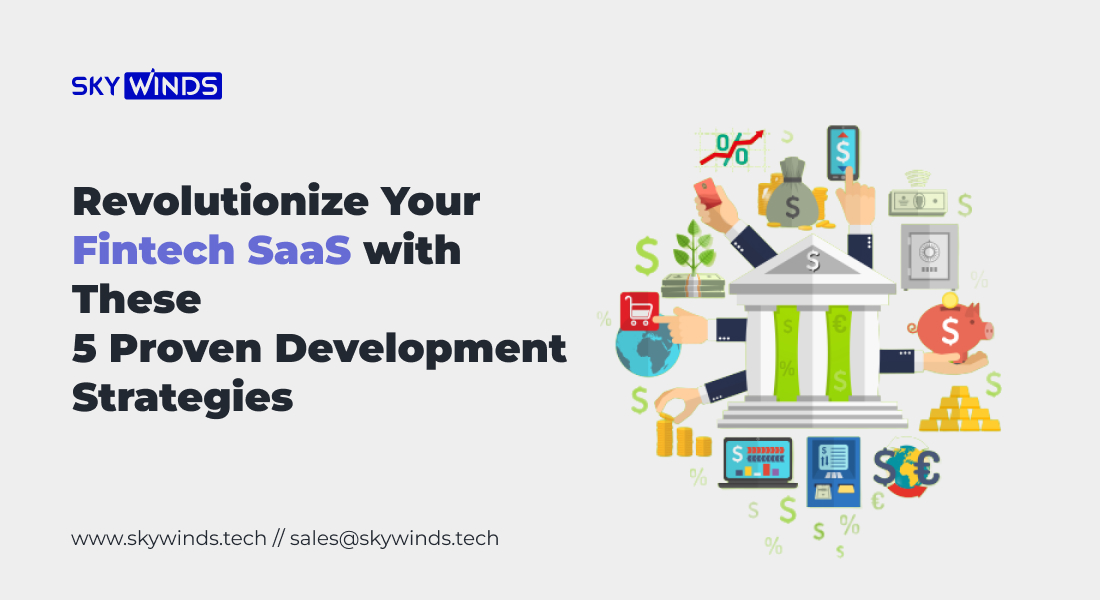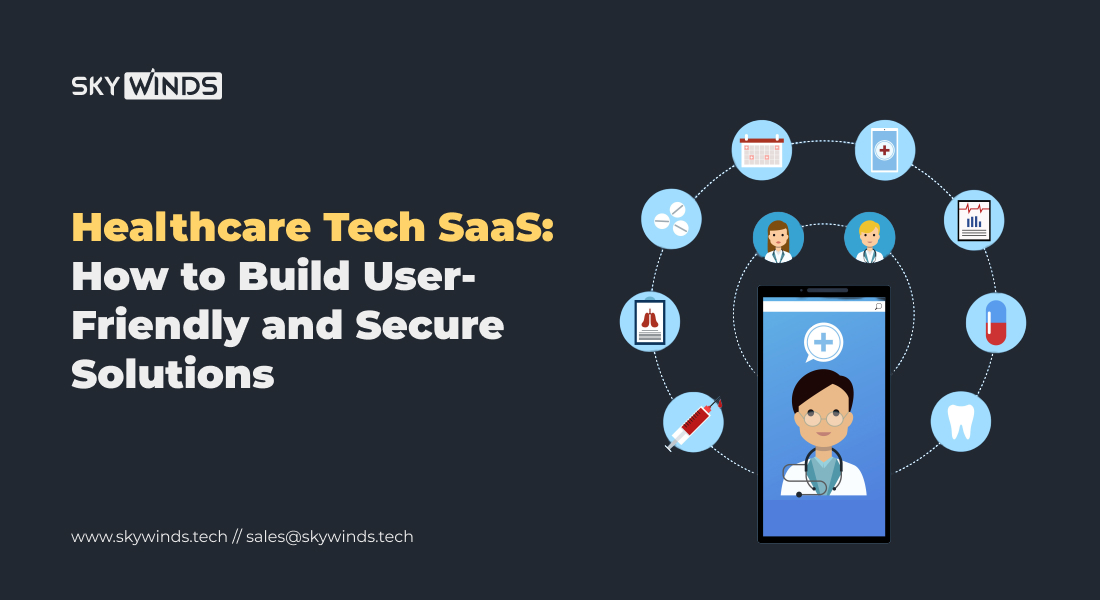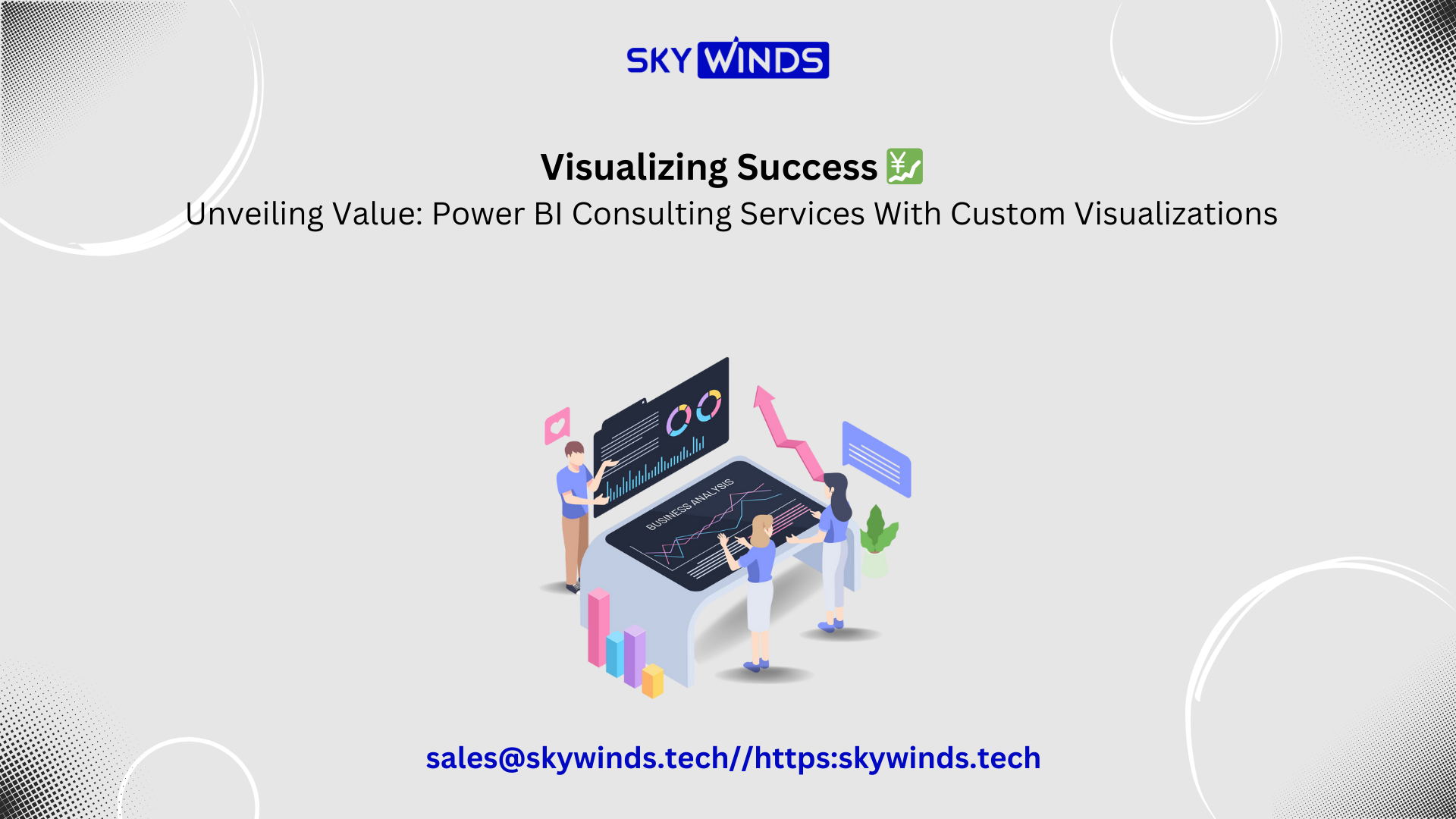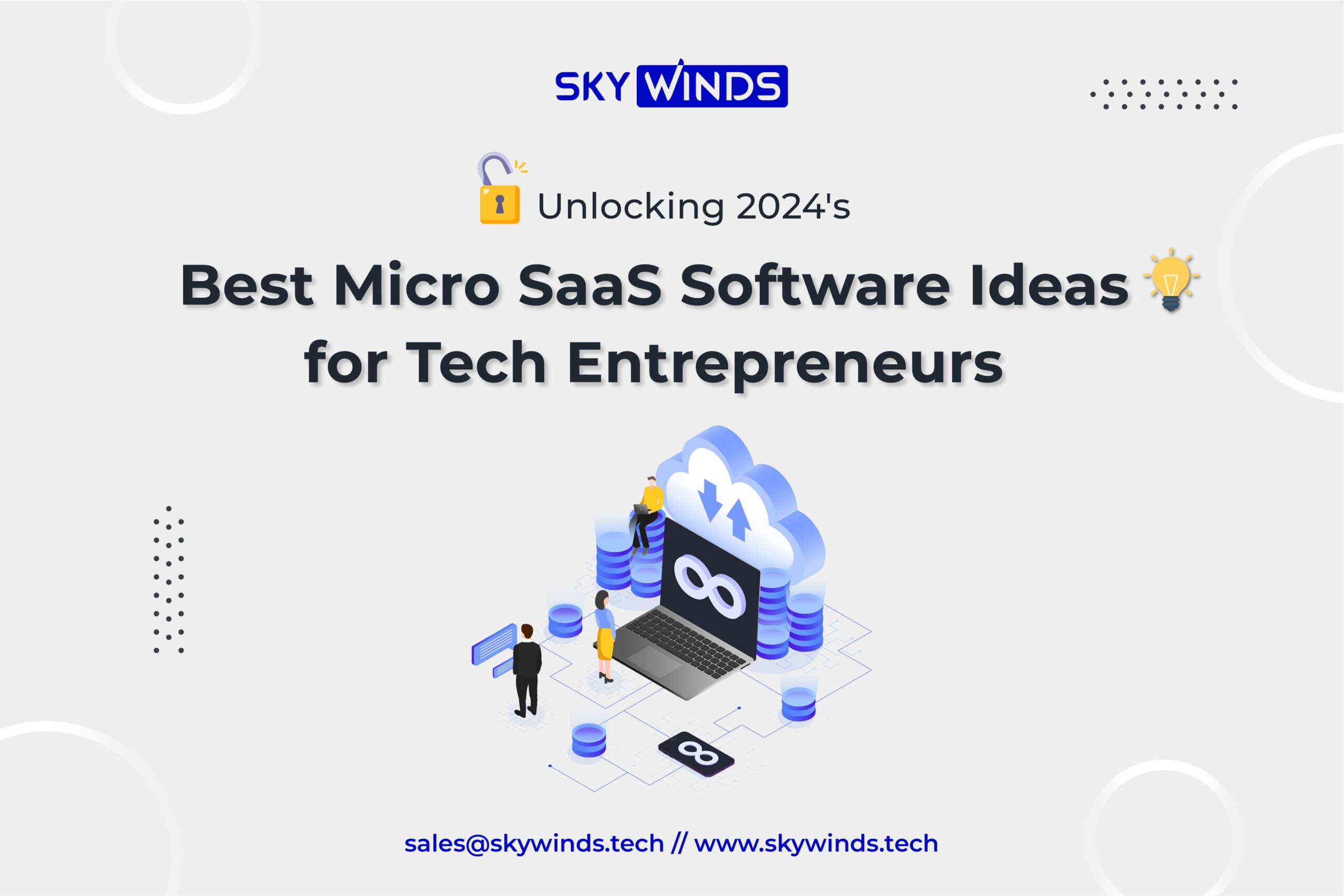Table of Contents
Introduction
Creating a game-changing product is the first step towards disrupting the financial sector, but getting your product in front of enough potential customers to make it huge might be difficult in today’s competitive environment, especially now that established financial institutions are beginning to adopt cutting-edge technology and provide customers with world-class digital banking services.
However, from the perspective of the average customer, financial services are very dull. What if I told you that by using these strategies in your Fintech SaaS development now, you might catapult your business into the future?
Compliance Strategies of fintech firms
Financial services that follow government guidelines will only last for a while. Therefore, learning the country’s regulations in which you want to launch your fintech app is an essential first step.
Fintech’s major developments and obstacles
More and more businesses are exploring novel approaches due to the constantly shifting financial technology sector. Let’s look at the most salient tendencies affecting how you build financial technology products.
- Artificial intelligence and machine learning: Since AI and machine learning-powered platforms enable businesses to analyze enormous data blocks and make informed judgments, research suggests they will help financial sector corporations save expenses. In addition, complex algorithms aid in preventing fraudulent actions and unauthorized account access.
- Online banking: According to the Provident Bank 2020 Study, over 31% of respondents already use banking services through web applications, while just 7% don’t use digital banking. (and the vast majority of them are well over the age of 50). This implies that clients who value time-saving transactions and account management will increasingly gravitate toward digital banking.
- Massive Data: Daily device data collection is predicted to reach quintillions. With Big Data, financial organizations may mine unstructured data for useful insights into customers’ habits. This aids in forming the most efficient advertising plans and growth prospects.
- Blockchain: A distributed peer-to-peer ledger system prioritizes openness and data integrity by storing information in immutable blocks with timestamps. This facilitates dependable connections between customers and service providers. This innovation will likely shape the future of the financial technology industry.
Financial technology app categories
Let’s look at the many categories of fintech applications and the most popular ones in each.
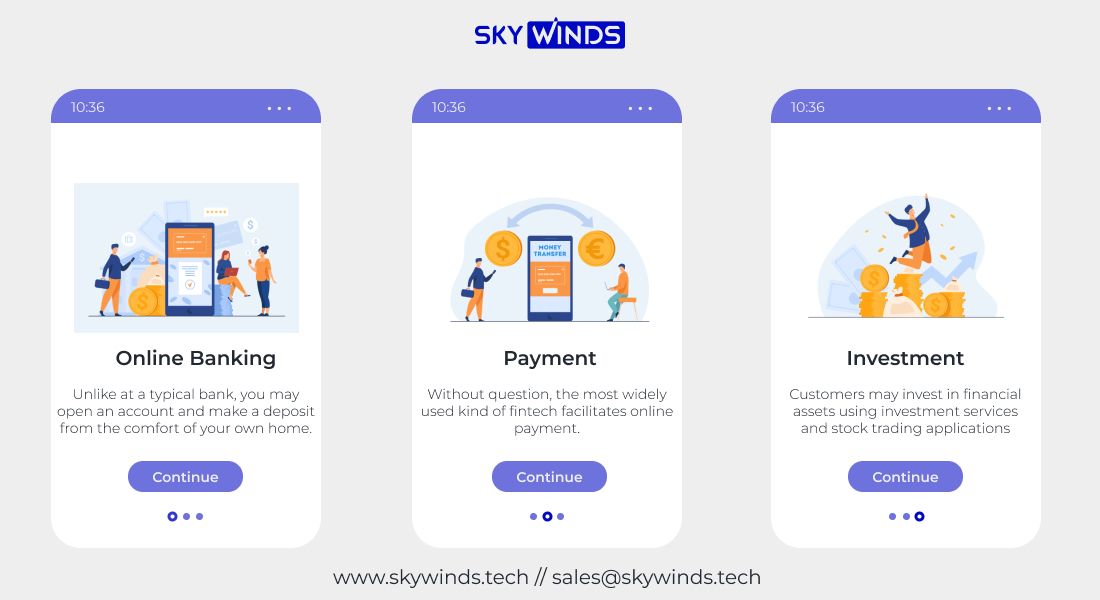
Online Banking
For quick transactions and fuss-free money management on the go, digital-only banks take a lot of work to beat. Unlike at a typical bank, you may open an account and make a deposit from the comfort of your own home.
- Point Card is an electronic banking solution offered by the bank. An adaptable banking software that prioritizes modern users by making it simple and clear to manage one’s finances.
Payment
Without question, the most widely used kind of fintech facilitates online payment. Payment gateways have made it possible for companies and customers all over the globe to transact in digital currency and make digital money transfers.
- PayPal – online payment service. An industry-leading platform for accepting many forms of payment for goods and services.
RegTech
The term RegTech is used to describe the software that helps fintech firms examine local regulations. These systems reduce the potential for mistakes in monitoring by making extensive use of automation. They are, of course, useful for programs that target users in different regions.
- Alyne – a Cloud-based risk monitoring and management software with a comprehensive collection of control templates.
Cryptocurrency
Many banks and other financial institutions are increasing their cryptocurrency investments as blockchain becomes more widespread. In addition, anonymity, speed, and, most significantly, freedom from government oversight of cryptocurrency transactions all play a positive role.
- Coinbase is a service that deals in cryptocurrency—a widely used marketplace for buying and selling all major cryptocurrencies.
Crowdfunding
Raising money through crowdfunding has become more common. Crowdfunding platforms are the go-to for startup investment because of the minimal inherent risk. These platforms often have a user-friendly interface, investment charts, a comprehensive payment history, and a discussion board to keep donors interested.
- Kickstarter is one example of a crowdfunding service—the go-to spot for crowdfunding, including other financial technology applications.
Investment
Customers may invest in financial assets using investment services and stock trading applications. Data analytics and investment suggestions are other prominent functions of these applications.
- E*TRADE. A cutting-edge advisory service that recommends when and where to put money and offers clear instructions for investing online.
Fintech app key features
If you want your fintech app to succeed, you should include these key elements while having Fintech SaaS Development:
- Bank Account Integration: Without banks, it isn’t easy to conceive of any financial service. The strategy is straightforward: enabling users to manage their bank accounts inside the app will increase happiness. But why stop with financial institutions?
- Easy to use design: Most consumers want the app to have an engaging and simple UI with quick sign-up. Furthermore, a cutting-edge user interface may set your financial product apart from the rest of the pack.
- Plugins: If remittance software, for instance, can integrate with applications for placing food orders and managing finances, it would be more useful to users.
- Payment Gateway: Payment Gateway, Money transfers, digital payments, and balance monitoring should be simple with your app. But you can’t put safety aside for ease of use.
How do you make a financial technology product that people will want to use? Let’s look deeply at your steps for Fintech SaaS development.
The 9-Step Process for Fintech SaaS Development
Use our tried-and-true process to combine your special features with the product’s basic features.
The First Step: Do Your Homework
Here’s the deal: research time should increase in proportion to the complexity of the software project. Research is essential in the fintech business because of its complexity.
Research these areas thoroughly before you begin creating a financial technology product:
- The Target Region: Government agencies oversee the financial sector, and several are mulling over how to treat cryptocurrencies. As a result, it is recommended that you research the current legal framework and proposed legislation.
- Scope of Work: Delaying your release and running out of money midway through development could be better ideas. That’s why beginning your project with accurate cost and timeline projections is important.
- End-consumer: Learn more about your target market and the services they need. Which do you anticipate more, desktop or mobile users? They don’t need your software.
The Second Step: Pick Your Technology Platform
The financial services sector is all about adjusting to changing consumer preferences. These concepts inform your choice of technologies and allow you to maneuver as you build.
Developing many platforms at once can exponentially increase your development costs. Hire technology consultants or a specialized team with expertise utilizing the appropriate technologies for cross-platform financial app development if you have any questions regarding the technology stack.
The Third Step: Form a Group
Find experts that can help you create a marketable financial product. Your ideal team of developers will have knowledge of the financial industry, the right technology stack, and effective means of communication.
Where would you look for a group with all the required knowledge and experience? Several strategies are available to you:
- First, you may form a group of experts inside your organization. You can outsource a remote workforce, but you’ll be responsible for recruiting, interviewing, and screening them yourself.
- You may reduce overhead expenses and access a huge talent pool by going this route. However, communication and management become a stumbling block if you haven’t worked with remote teams.
- Now more than ever, you have the option of staffing up with expert programmers. Incorporating business analysts, user experience designers, front- and back-end developers, quality assurance specialists, project managers, and product owners into your software development team is a viable choice. It’s the most adaptable solution for ongoing endeavors. (fintech apps certainly fit the description).
A reliable software development company can recruit dedicated, well-screened individuals to work with your current staff. You and your dedicated team of Relevant developers may begin work on your financial product in only two weeks.
The Fourth Step: Establish the Minimum Viable Product
It’s important to gauge consumer demand for your financial app before investing much in its creation.
Your product’s Minimum Viable Prototype (MVP) should include the essential features. MVP development services allow you to put your software through its paces early in the development process. Consequently, you’ll have more information to weed out features that clients don’t care about and home in on those they do.
The Fifth Step: Consider application programming interfaces and other types of integrations.
Basic financial services such as purchases, savings, bill paying, live chat, and integrations are now expected from fintech applications. If you’re going the custom route with your app’s features, you should still provide API support for external services.
After all, client satisfaction is paramount in the financial services industry, and your users want seamless integration with their preferred SaaS platforms. The connection must be safe and reliable.
The Sixth Step: Pay Attention to Safety
Your app will gather customers’ financial data, personal details, and other data. Therefore, data breaches may devastate your business’s finances and image.
Your team must be familiar with data protection laws, rules, and best practices to build safe fintech products. Data encryption (RSA, 3DES, Twofish techniques), dynamic password changing, multi-factor and adaptive authentication, and role-based access control are some of the most successful options.
The Seventh Step: Interface design
The foundation of every successful financial technology software is its user interface and design. Every function and piece of the user interface must have a purpose.
Maximizing profits requires catering to both the service provider and the end users. In the case of a money-lending app, the two main users will be the lender and the borrower. Developing specialized user interfaces will attract a wider range of buyers. The app should be built with a B2B interface, even if the current emphasis is business-to-consumer services.
The Eighth Step: Activate the Test Version
Software development cannot proceed without continuous testing, yet testing alone will not guarantee a successful release. However, there is a tried-and-true method to boost quality before shipping.
Start a small beta test with your supporters or future users. The kinks in your software may be ironed out with real user feedback. Keeping your personal information safe is a no-brainer. So, have your legal department create a non-disclosure agreement (NDA) and other necessary paperwork for your testers.
The Ninth and Final Step is: Support the app.
The launch of a product is just the first step. Given the dynamic nature of the fintech industry, you should be ready to provide ongoing support and enhancements to your app.
As you can see, keeping up with the rapid pace of fintech innovation is challenging. However, with the appropriate leader, things might run more smoothly.
What is the Cost of creating a Financial Technology app?
The typical cost of a financial technology app is between $20,000 and $150,000. The ultimate cost depends on many variables, including considerations including complexity (the number of features you want to include), application kind, technology stack, and development team.
Conclusion
Demand for simple-to-use digital services has contributed to the rapid growth of the fintech industry. To create a successful financial product, you must first comprehend relevant rules, needs, and user expectations.
Do you want to build a successful Fintech application for your business? You need to partner with a reliable Fintech app development company. Skywinds specializes in Fintech SaaS Development with a proficient team of fintech app developers. We have hands-on experience in developing different financial technology apps for global clients.
If you are looking for Fintech Saas development services at costs that suit your budget, call us now at +91 73833 03297 for a free consultation or a quote.

